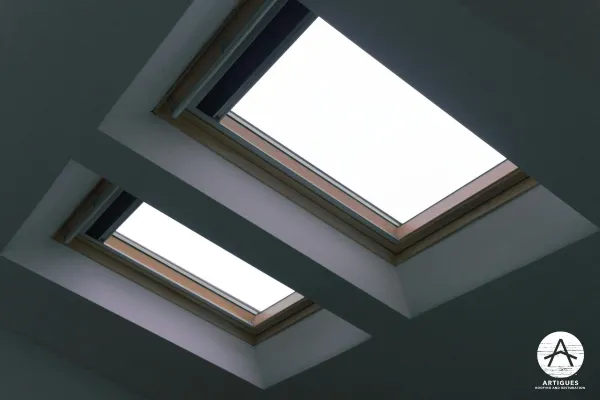
How to Prevent Problems with Roof Ventilation as Your Roof Ages
Roof ventilation is a critical component that ensures the longevity and efficiency of a roofing system. As a roof ages, maintaining proper ventilation becomes increasingly important to prevent issues such as moisture accumulation, mold growth, and excessive energy costs. We will explore the importance of roof ventilation, common problems that arise with aging roofs, and strategies to prevent these issues, ultimately ensuring the roof's durability and functionality.
Understanding Roof Ventilation
Roof ventilation is a system designed to facilitate the flow of air through the attic space, balancing the intake and exhaust of air. Proper ventilation helps regulate temperature and moisture levels, preventing damage to the roof structure and the interior of the home. It involves various components, such as soffit vents, ridge vents, gable vents, and attic fans, working in tandem to create a balanced airflow.
The Importance of Roof Ventilation
Effective roof ventilation offers numerous benefits. It extends the life of roofing materials by preventing heat buildup and reducing the risk of ice dams in colder climates. It also protects against moisture-related issues, such as mold and rot, by allowing humid air to escape. Furthermore, proper ventilation contributes to energy efficiency, reducing cooling costs in the summer and heating costs in the winter.
Common Problems with Aging Roofs
As roofs age, several problems can compromise their ventilation systems:
Clogged Vents: Debris, such as leaves and dirt, can accumulate in vents, obstructing airflow. This is particularly common in soffit and gable vents, which are more exposed to external elements.
Damaged Components: Over time, components like ridge vents and attic fans can deteriorate due to weather exposure, leading to reduced ventilation efficiency.
Inadequate Ventilation Design: Older homes may have been constructed with inadequate ventilation systems that do not meet modern standards. This can exacerbate problems as the roof ages.
Moisture Accumulation: Aging roofs are more prone to leaks, which can introduce moisture into the attic space, further complicating ventilation issues.
Strategies to Prevent Ventilation Problems
Preventing problems with roof ventilation as the roof ages involves proactive maintenance and, in some cases, upgrading the ventilation system. Here are several strategies to consider:
Regular Inspections: Conducting regular inspections of the roof and its ventilation components is crucial. Look for signs of damage, such as cracked or missing vents, and clear any debris that may obstruct airflow. Professional inspections are recommended at least once a year, especially after severe weather events.
Upgrade Ventilation Components: In some cases, older ventilation components may need to be upgraded to more efficient models. For instance, replacing static vents with ridge vents can enhance airflow. Installing attic fans can also improve ventilation, particularly in homes with limited natural airflow.
Seal and Insulate: Proper sealing and insulation of the attic space can prevent moisture from entering and ensure that the ventilation system functions optimally. Ensure that insulation does not block vents, as this can hinder airflow.
Address Roof Leaks Promptly: Roof leaks can introduce moisture into the attic, exacerbating ventilation issues. It's essential to address leaks promptly and repair any damaged roofing materials to maintain a dry and well-ventilated attic.
Consult a Professional: If ventilation problems persist, consulting a roofing professional is advisable. They can assess the current system and recommend modifications or upgrades to improve ventilation efficiency.
As roofs age, maintaining proper ventilation becomes increasingly important to prevent a range of issues that can compromise the roof's integrity and the home's comfort. By understanding the importance of roof ventilation, identifying common problems with aging roofs, and implementing preventive strategies, homeowners can ensure that their roofs remain in good condition. Regular maintenance, timely upgrades, and professional consultations are key to preventing ventilation problems and extending the life of an aging roof. Through these efforts, homeowners can safeguard their investment, enhance energy efficiency, and maintain a healthy living environment.